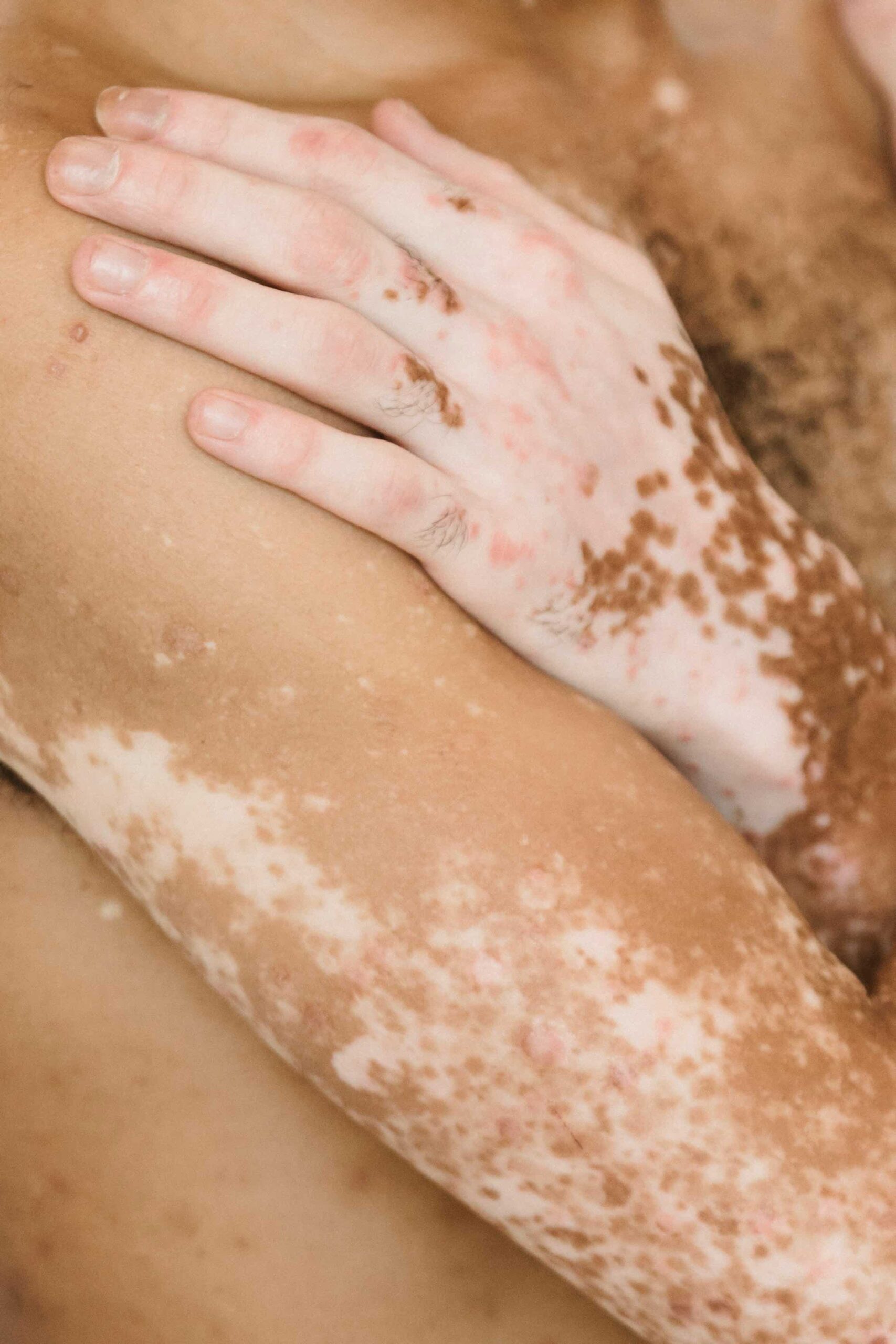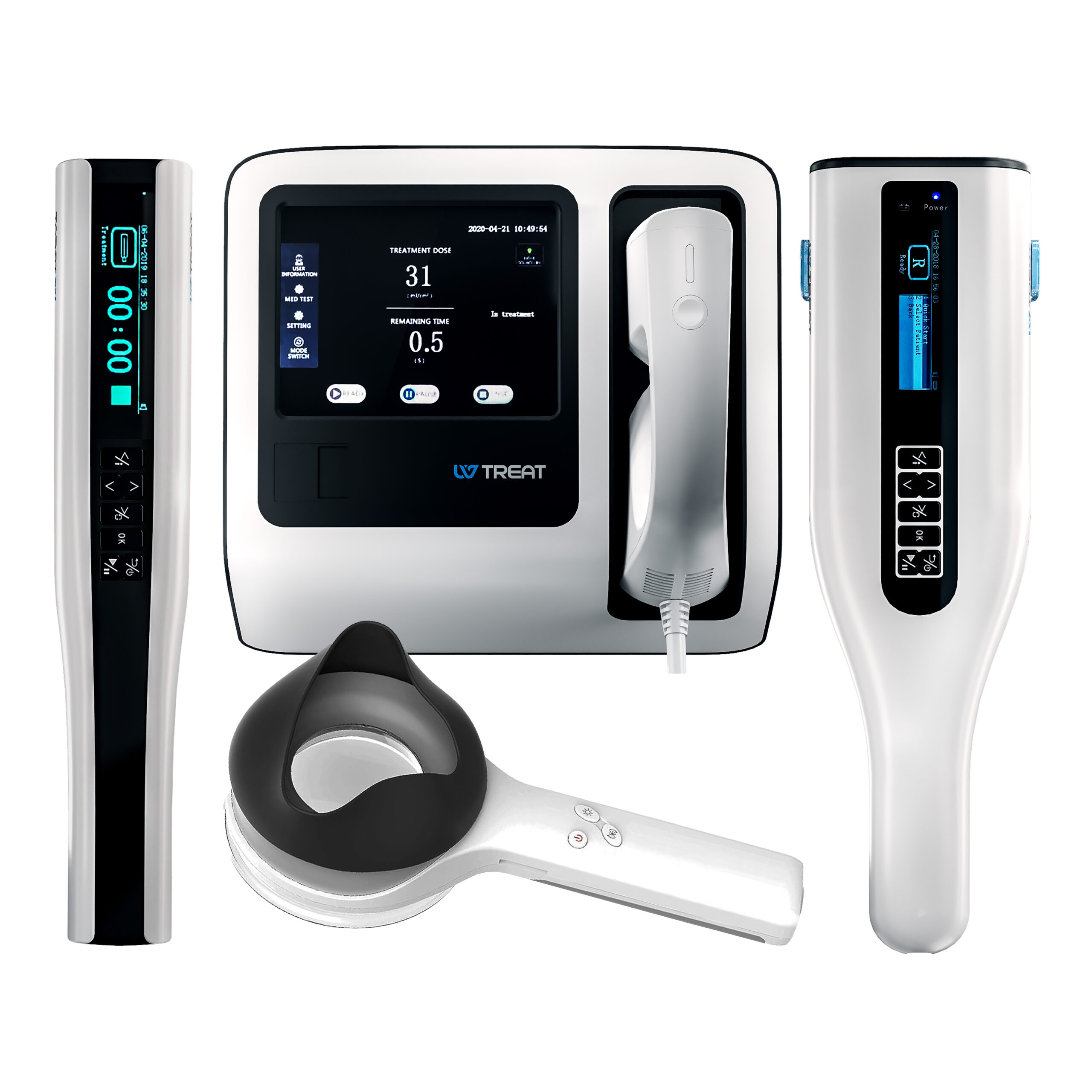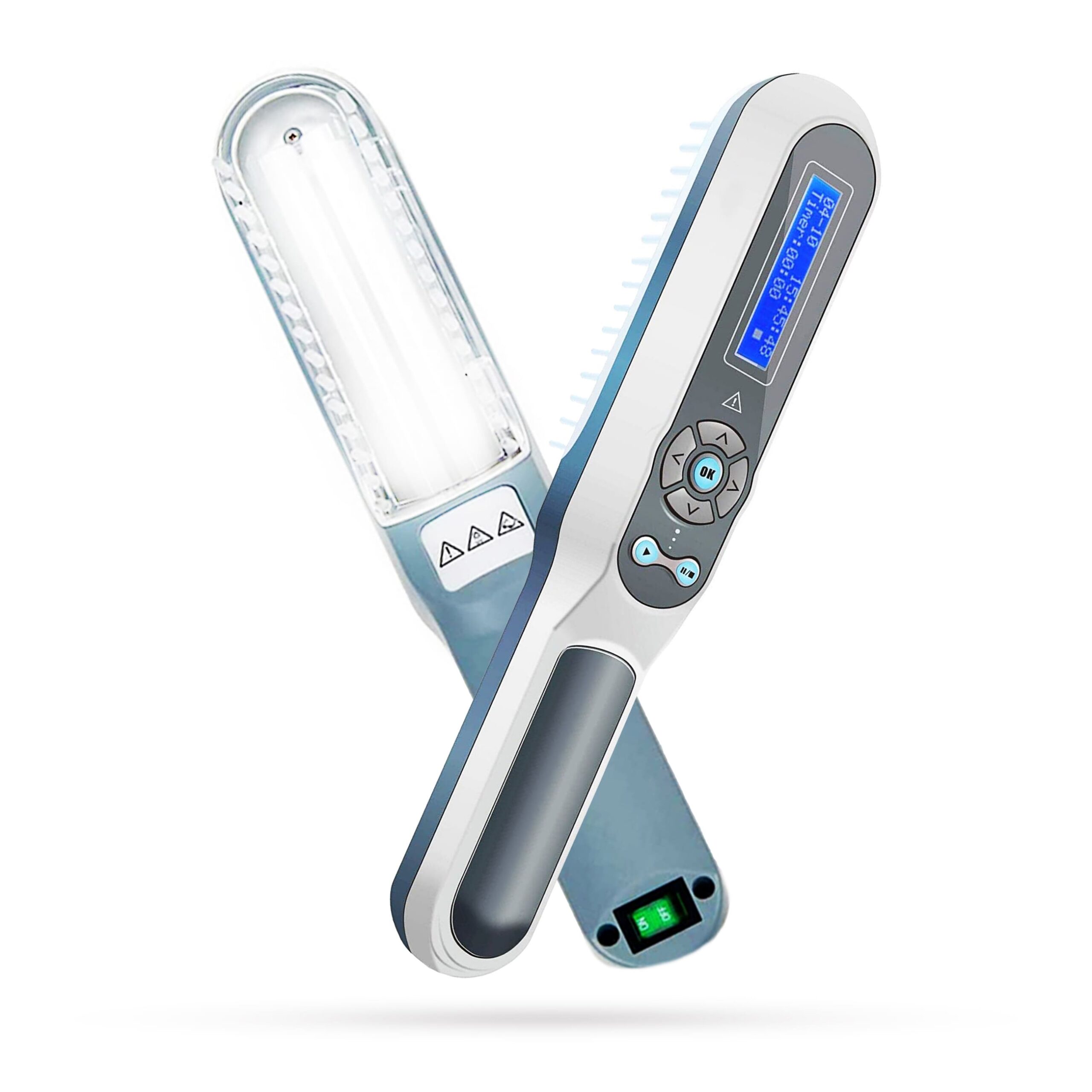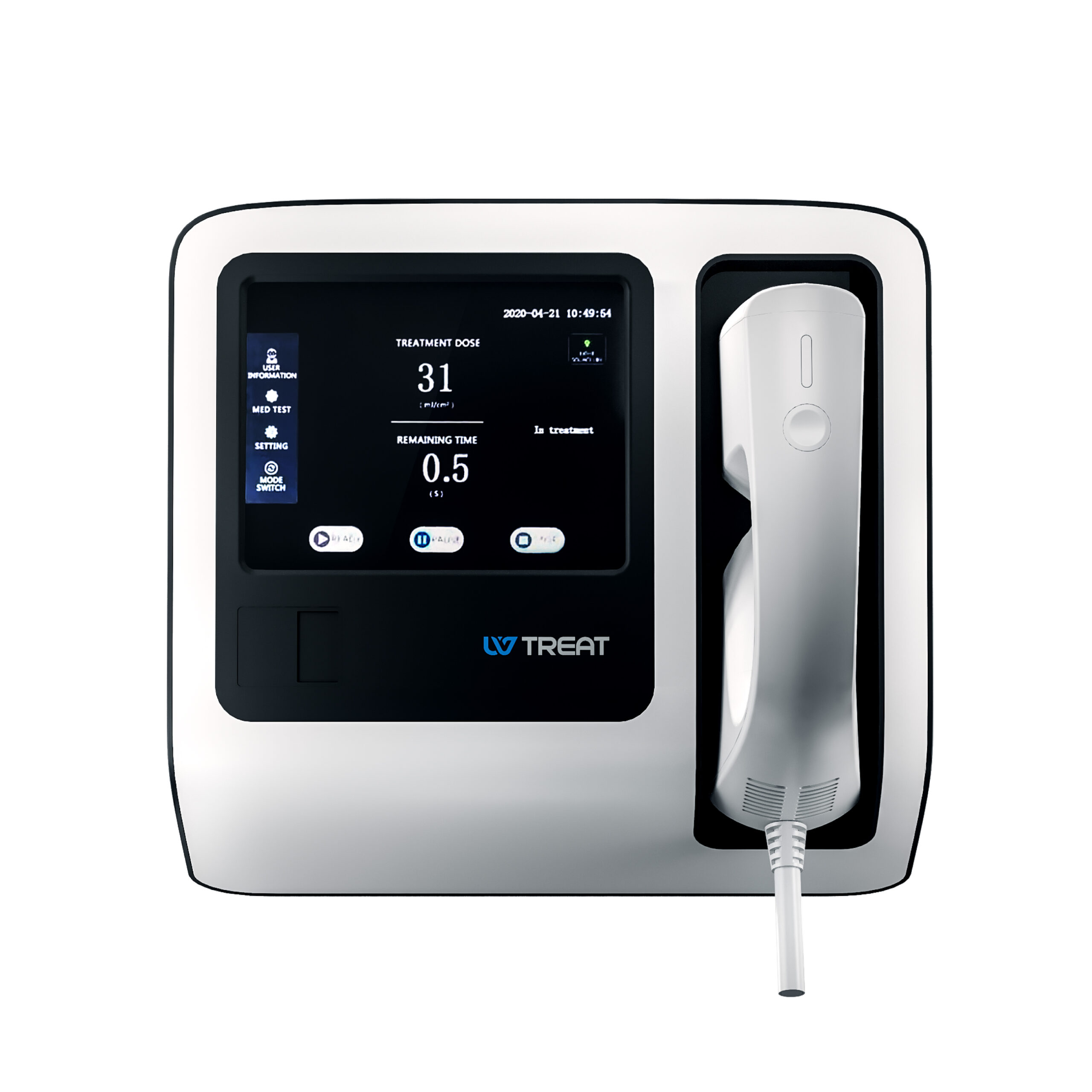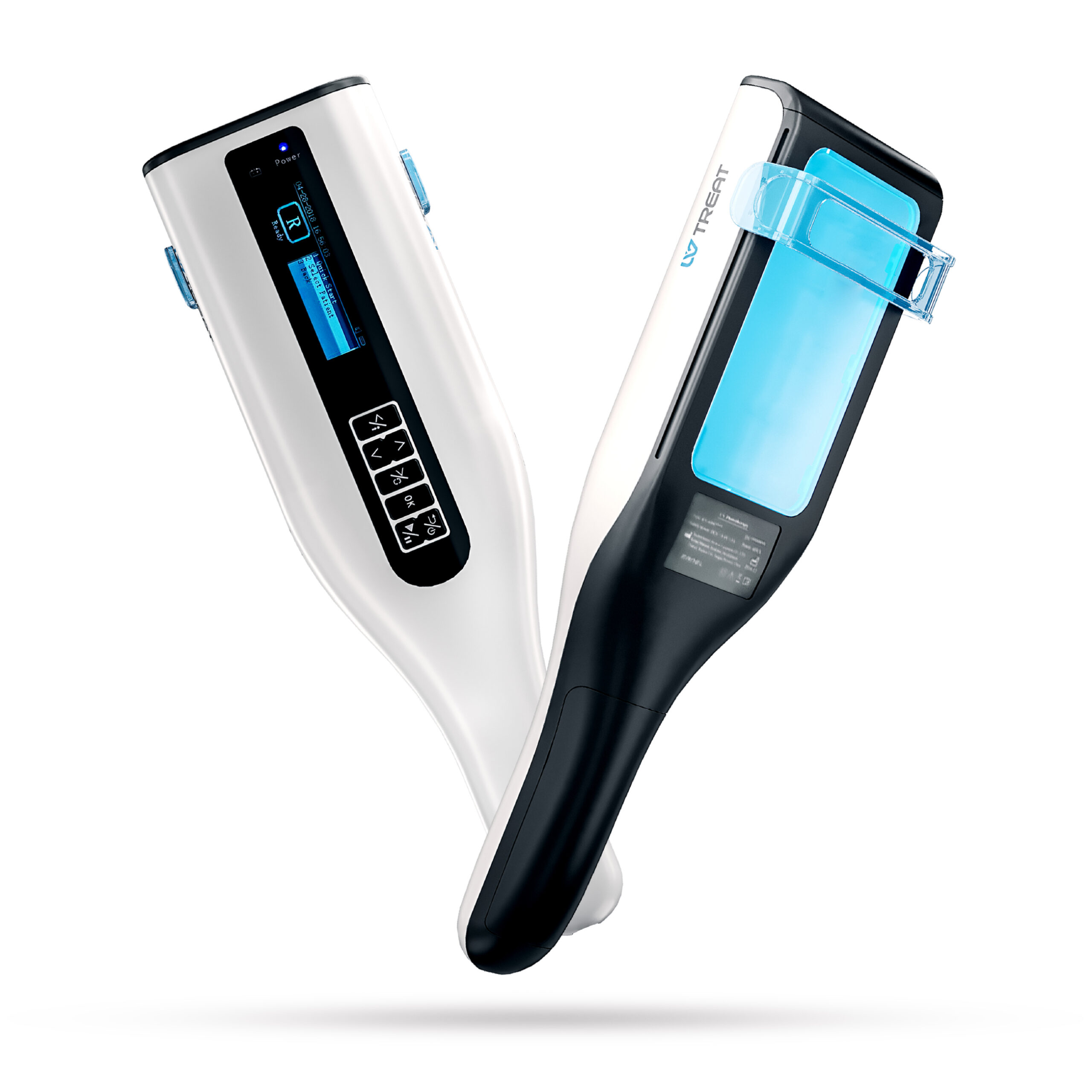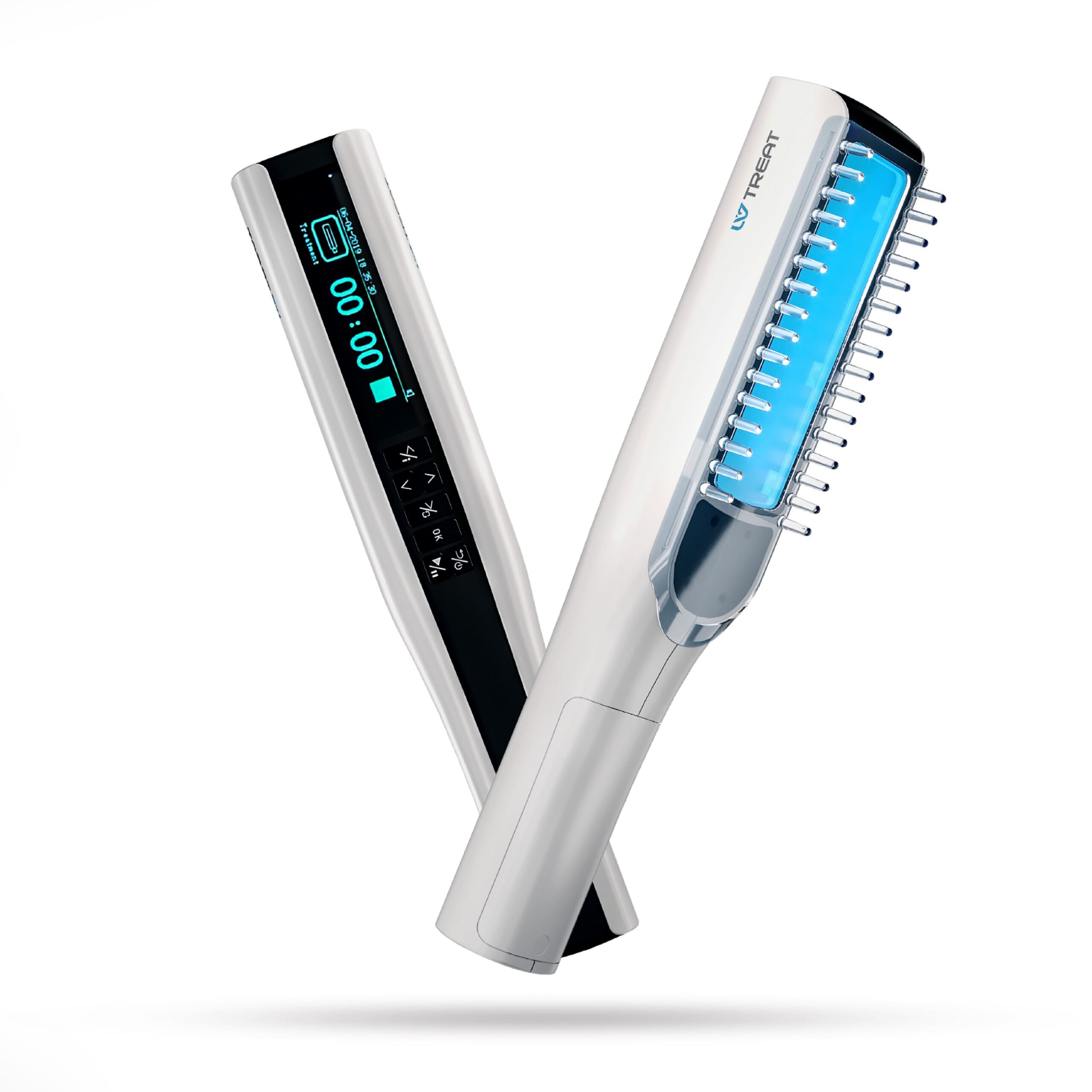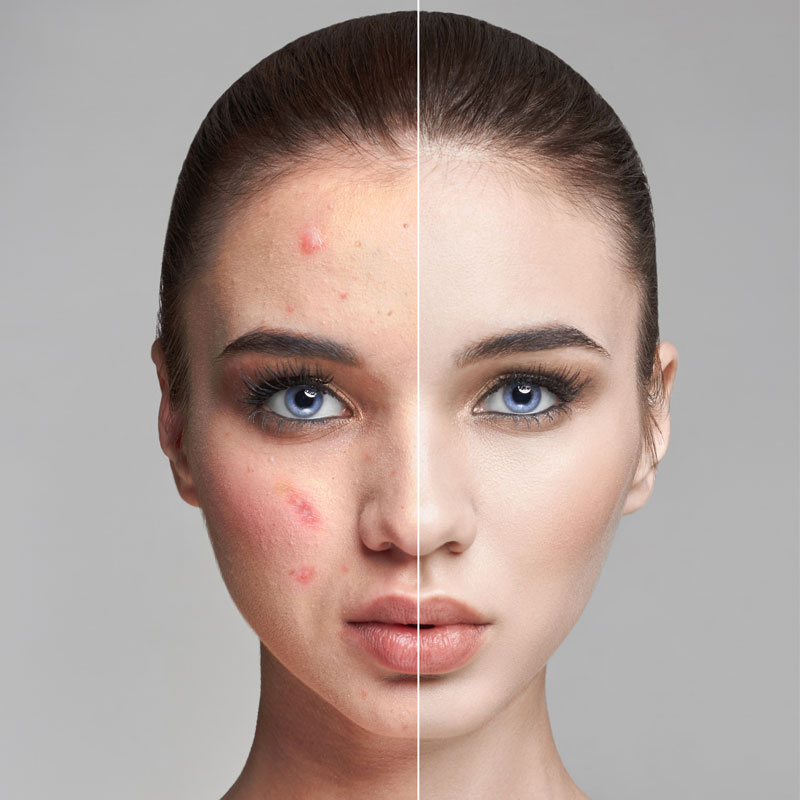What is Vitiligo?
Vitiligo is a disease that causes loss of skin color in patches. The discolored areas usually get bigger with time. The condition can affect the skin on any part of the body. It can also affect hair and the inside of the mouth.
Vitiligo is a chronic dermatological condition marked by the loss of skin pigmentation, resulting in distinct white patches. This depigmentation occurs when melanocytes, the cells responsible for producing the skin pigment melanin, are destroyed or cease to function. While the condition can manifest on any part of the body, it often starts on sun-exposed areas such as the face, hands, and feet. Over time, these patches may expand and vitiligo can develop on other parts of the body, including the mucous membranes and hair.
The prevalence of vitiligo varies globally, but it is estimated to affect between 0.5% to 2% of the population worldwide (Ezzedine, Eleftheriadou, Whitton, & van Geel, 2015). It can affect individuals of any age, gender, or ethnicity, though the visibility of the patches may vary depending on skin tone.
Symptoms and Signs of Vitiligo
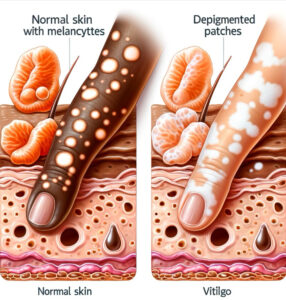
Vitiligo is primarily recognized by the presence of well-demarcated, depigmented white patches on the skin. These patches are due to the loss of functioning melanocytes. The condition is notably unpredictable, with some individuals experiencing a rapid loss of pigmentation, while others have a slower, gradual change. Vitiligo can affect any area of the skin, but it typically appears on areas frequently exposed to the sun, such as the hands, face, and feet (National Institute of Arthritis and Musculoskeletal and Skin Diseases [NIAMS], 2021).
The symptoms of vitiligo extend beyond the skin, potentially leading to premature graying of the hair on the scalp, eyebrows, eyelashes, or beard. The mucous membranes and the retina may also lose pigmentation, and in some cases, individuals with vitiligo experience alterations in their hearing and vision (NIAMS, 2021).
Summarizing Symptoms and Signs of Vitiligo
The most apparent symptom of vitiligo is the appearance of white patches on the skin. These patches are more common on sun-exposed areas, including the hands, feet, arms, face, and lips. Other signs include:
- Premature whitening or graying of hair on the scalp, eyebrows, eyelashes, or beard.
- Loss of skin color in the mucous membranes inside the mouth and nose.
- Discoloration in the retina or color part of the eye.
- Some individuals may experience depigmentation of hair or experience hearing loss if the condition affects melanocytes in the inner ear.
Vitiligo can begin at any age but often manifests before the age of 30. It can progress, causing more extensive skin depigmentation over time, although some people may experience periods of stability without progression.
Types and Patterns of Vitiligo
Vitiligo presents in various forms and patterns, each with its own progression and distribution across the body. The classification of the condition is based on these patterns:
- Generalized Vitiligo: This is the most prevalent form, where individuals observe symmetrical depigmented patches on both sides of the body. The progression can be gradual or rapid and often involves areas like the hands, knees, elbows, and face (Gauthier & Benzekri, 2020).
- Segmental Vitiligo: Less common and typically occurs at a younger age. It affects only one side of the body and may cease spreading after a year or two.
- Universal Vitiligo: A rare form involving widespread depigmentation, covering most of the body.
- Localized Vitiligo: Characterized by a few patches in a single area; also known as focal vitiligo.
- Acrofacial Vitiligo: Primarily affects areas away from the body’s center, such as the face and hands, as well as around body openings.
The progression of vitiligo is highly individualized, and while some may experience a stabilization of symptoms without any intervention, others may see a gradual spread over many years (Taïeb & Picardo, 2009).
Causes and Triggers of Vitiligo
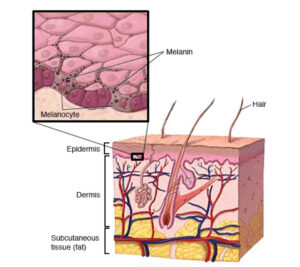
The etiology of vitiligo is multifactorial, involving a combination of genetic, autoimmune, and environmental factors. The destruction or malfunction of melanocytes, which leads to the hallmark white patches, is believed to be primarily autoimmune in nature (Spritz, 2013). Individuals with certain genetic profiles are more predisposed to developing vitiligo, particularly when combined with environmental triggers such as:
- Autoimmune Conditions: The presence of other autoimmune diseases can increase the likelihood of developing vitiligo.
- Family History: Genetics play a crucial role, with a higher prevalence observed in individuals with a family history of the condition.
- Trigger Events: Physical trauma, sunburn, or stress can precipitate the onset of vitiligo in susceptible individuals (Rodrigues, Ezzedine, Hamzavi, Pandya, & Harris, 2017).
Despite extensive research, the exact mechanisms leading to the onset of vitiligo remain a subject of ongoing investigation.
Treatment Options for Vitiligo
While there is no definitive cure for vitiligo, various treatments aim to restore pigmentation or even out skin tone. Treatment efficacy varies among individuals and may depend on the type and extent of vitiligo:
- Topical Therapies: Corticosteroid creams and calcineurin inhibitors can be effective, especially for small areas of depigmentation (National Institute of Arthritis and Musculoskeletal and Skin Diseases [NIAMS], 2021).
- Phototherapy: Controlled exposure to ultraviolet light, often in combination with topical treatments, can help restore some color to the white patches (Ezzedine et al., 2015).
- Surgical Options: In certain cases, skin grafting and melanocyte transplants are considered, particularly when topical treatments and light therapy are ineffective.
- Camouflage Therapy: Cosmetic options like makeup or self-tanners can mask depigmentation, improving appearance and boosting self-esteem.
Psychosocial Aspects of Living with Vitiligo
The impact of vitiligo extends beyond physical symptoms, often affecting mental health and quality of life. Individuals with vitiligo may experience:
- Psychological Distress: Feelings of self-consciousness, anxiety, depression, and social stigmatization are common among people with vitiligo (Thompson, Kent, & Smith, 2018).
- Social Challenges: The visibility of the condition can lead to difficulties in social interactions and relationships, impacting daily activities.
- Quality of Life: Studies have shown that vitiligo can significantly affect one’s quality of life, necessitating support from healthcare providers, counseling, or support groups to address these challenges (Ezzedine et al., 2015).
Preventive Measures and Sun Protection for Vitiligo
Individuals with vitiligo should take extra care to protect their skin from the sun, as areas lacking pigment are more susceptible to sunburn. Complications can include social or psychological distress, eye problems, and hearing loss, emphasizing the importance of comprehensive care from healthcare providers.
While preventing vitiligo is challenging due to its complex etiology, managing its progression and mitigating symptoms is possible. Key aspects include:
- Sun Protection: UV protection is crucial as depigmented skin is more susceptible to sunburn. Using sunscreen with a high SPF, wearing protective clothing, and avoiding peak sun hours can help protect the skin (American Academy of Dermatology Association [AAD], 2021).
- Avoiding Triggers: Identifying and avoiding potential triggers, such as stress and skin trauma, can help in managing vitiligo.
Consulting Healthcare Providers for Vitiligo
Early consultation with dermatologists or healthcare providers is essential for individuals noticing skin depigmentation. They can:
- Provide Accurate Diagnosis: Differentiating vitiligo from other skin conditions is crucial for appropriate treatment.
- Offer Tailored Treatments: Based on individual cases, healthcare providers can suggest the most suitable treatment options.
- Support Mental and Emotional Well-being: Addressing the psychological impact of vitiligo is as important as treating physical symptoms. Dermatologists can refer patients to support groups or mental health professionals.
Embracing Life with Vitiligo
Living with vitiligo involves navigating a path of acceptance and adaptation. It’s about embracing the condition as part of one’s identity and finding support and strength in the community. Individuals with vitiligo are encouraged to:
- Seek Emotional Support: Engaging with support groups or speaking with a mental health professional can be incredibly beneficial. These resources provide a platform for sharing experiences and coping strategies (Thompson, Kent, & Smith, 2018).
- Educate Others: Raising awareness about vitiligo can help reduce stigma and misunderstanding. Educating others about the condition fosters a more empathetic and informed society.
- Focus on Overall Well-being: Maintaining a healthy lifestyle, including a balanced diet and regular exercise, can positively impact both physical health and emotional well-being.
Vitiligo, while presenting challenges, does not define an individual. Many people with vitiligo lead fulfilling, successful lives. The journey with vitiligo is unique for each person, but with the right support and resources, it can be a journey of growth and resilience.
Phototherapy: An Effective Treatment for Vitiligo
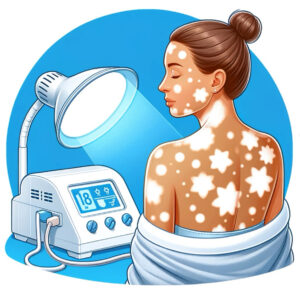
Phototherapy, specifically Narrowband UVB (NB-UVB) light therapy, has emerged as a highly effective treatment for managing vitiligo. It involves exposing the skin to ultraviolet light on a regular schedule, under medical supervision.
The Role of NB-UVB Phototherapy in Vitiligo
- Mechanism of Action: NB-UVB phototherapy stimulates melanocytes, the cells responsible for skin pigmentation, to produce melanin. This process can help repigment the white patches caused by vitiligo.
- Clinical Efficacy: Studies have shown that NB-UVB phototherapy can lead to significant repigmentation, especially in cases where vitiligo is active. The treatment is most effective on certain body areas, such as the face and trunk (Bae, Jung, & Park, 2017).
Advancements in At-Home Phototherapy Equipment
- Accessibility and Convenience: Recent advancements have made phototherapy equipment more accessible and convenient for at-home use. These devices are designed to be safe and user-friendly, allowing patients to receive regular treatment without frequent visits to a healthcare facility.
- Customization: At-home phototherapy devices often come with features that enable customization of the treatment, such as adjustable light intensity and treatment timers, tailored to individual needs.
- Cost-Effectiveness: While the initial cost of acquiring at-home phototherapy equipment can be significant, it can be cost-effective in the long run, particularly for patients requiring long-term treatment.
Considerations and Safety
- Medical Supervision: While at-home phototherapy offers convenience, it should be undertaken under the guidance of a dermatologist to ensure it is appropriately used and to monitor the treatment’s efficacy and safety.
- Skin Monitoring: Regular monitoring of the skin for any changes or signs of overexposure is crucial. The treatment plan may need adjustments based on the skin’s response.
Final Thoughts: Navigating Life with Vitiligo
Vitiligo transcends being a mere skin condition; it represents a complex interplay of medical, psychological, and social dimensions. It’s a journey marked not only by changes in physical appearance but also by profound emotional and psychosocial impacts. Recognizing and empathizing with the challenges that individuals with vitiligo face is crucial in cultivating an environment of understanding and support.
Education and awareness are powerful tools in this journey. Understanding vitiligo’s nature, its unpredictability, and the available management strategies empowers individuals to take control of their health and well-being. It’s important for society to move beyond the cosmetic perceptions of vitiligo and to acknowledge it as a condition that requires a holistic approach to care.
Healthcare providers play a pivotal role in this narrative, not only by offering medical treatments but also by providing psychological support and guidance. Additionally, the value of community support, whether through online forums, support groups, or social networks, cannot be overstated. These platforms offer a space for sharing experiences, fostering connections, and promoting resilience among those affected.
Ultimately, living with vitiligo is about embracing one’s individuality and finding strength in both personal and shared experiences. With the right support, information, and care, individuals with vitiligo can lead rich, fulfilling lives, unbounded by the condition. In a society that increasingly values diversity and inclusion, understanding and embracing the uniqueness of each person, including those with vitiligo, enriches us all.
Embrace the Future of Vitiligo Treatment with UVTREAT
Transform your approach to vitiligo management with UVTREAT’s innovative at-home phototherapy solutions. Experience the convenience and effectiveness of state-of-the-art treatment right in the comfort of your home. UVTREAT’s advanced equipment is designed to provide safe, customizable, and user-friendly phototherapy, aligning with the latest advancements in vitiligo care.
Take the Next Step:
- Book a Consultation: Connect with one of our specialists to discuss how UVTREAT can cater to your specific needs. They will guide you through the process, ensuring you receive a personalized treatment plan.
- Explore More: Dive deeper into our resources and learn more about vitiligo treatment options. Our blog offers a wealth of information, from expert insights to patient stories, helping you stay informed about your condition.
- Make an Informed Decision: With UVTREAT, you’re choosing a path of empowerment and innovation. Visit our website to book a consultation and explore our blog for more information. Let us help you navigate your vitiligo treatment journey with confidence and ease.
Start your journey towards effective vitiligo management today. Visit UVTREAT to discover how our at-home phototherapy equipment can make a difference in your life.

